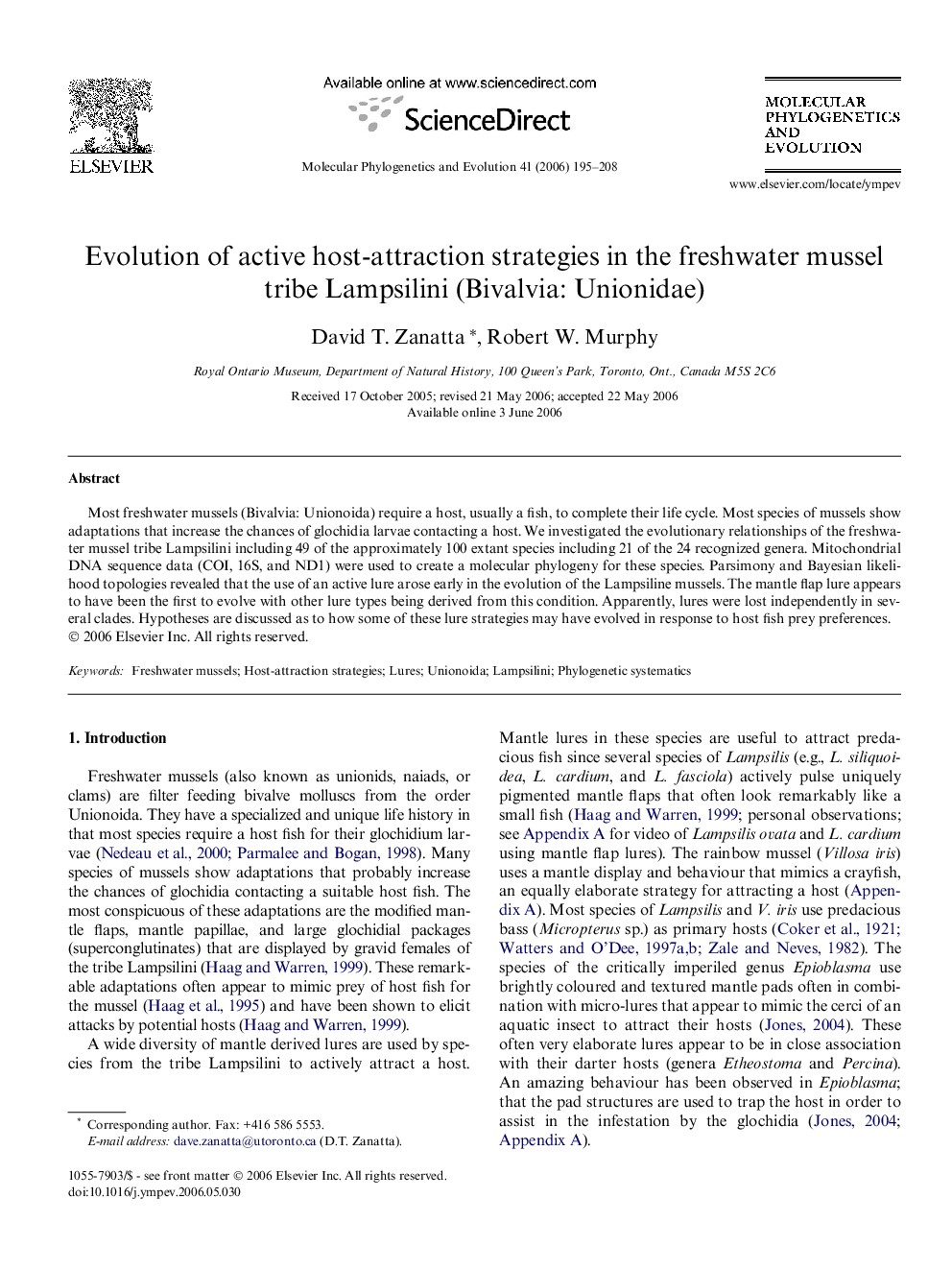| Article ID | Journal | Published Year | Pages | File Type |
|---|---|---|---|---|
| 2835589 | Molecular Phylogenetics and Evolution | 2006 | 14 Pages |
Most freshwater mussels (Bivalvia: Unionoida) require a host, usually a fish, to complete their life cycle. Most species of mussels show adaptations that increase the chances of glochidia larvae contacting a host. We investigated the evolutionary relationships of the freshwater mussel tribe Lampsilini including 49 of the approximately 100 extant species including 21 of the 24 recognized genera. Mitochondrial DNA sequence data (COI, 16S, and ND1) were used to create a molecular phylogeny for these species. Parsimony and Bayesian likelihood topologies revealed that the use of an active lure arose early in the evolution of the Lampsiline mussels. The mantle flap lure appears to have been the first to evolve with other lure types being derived from this condition. Apparently, lures were lost independently in several clades. Hypotheses are discussed as to how some of these lure strategies may have evolved in response to host fish prey preferences.
